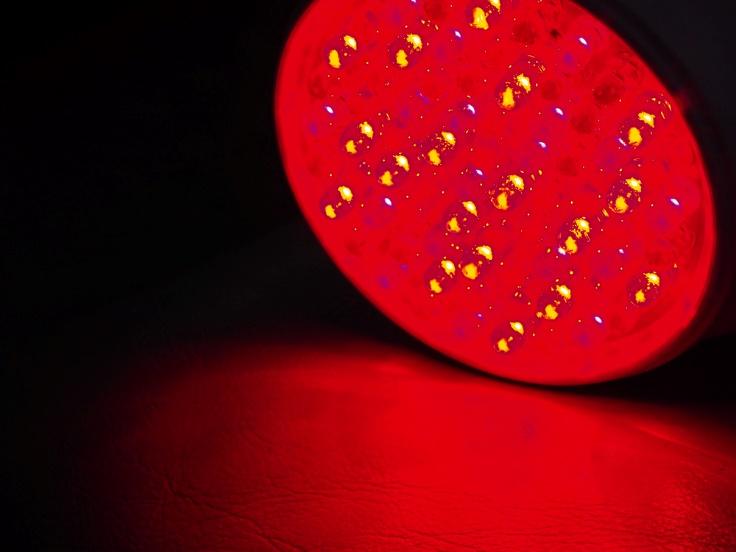Atopic dermatitis, commonly known as eczema, affects over 30 million individuals and presents as red, dry, and itchy skin. This chronic condition has no cure and can manifest anywhere on the skin.
Photobiomodulation, commonly known as red light therapy, has garnered global interest for its potential to treat various skin conditions, including eczema, psoriasis, acne scars, and rosacea. This article delves into the mechanics of red light therapy and its potential to promote healing in eczema.
What Is Eczema?
Individuals with this condition often experience dry and itchy skin, which is susceptible to infections. The development of the disease is believed to involve a combination of genetic and environmental factors.
Eczema exists in various forms, such as atopic dermatitis, contact dermatitis, seborrheic dermatitis, nummular eczema, dyshidrotic eczema, and stasis dermatitis. This condition can impact individuals of all ages, including children, affecting both men and women.
While eczema comes in various forms, it collectively exhibits common symptoms, including redness, dry patches, and irritation on the skin that can cause intense itching and discomfort. It is frequently noticed on the hands, neck, inner elbows, ankles, knees, feet, and in the vicinity of the eyes.
In cases of intense eczema flare-ups where traditional ointments or creams may not provide sufficient relief from inflammation, light therapy becomes a viable option during acute phases, according to recent studies. For individuals with sensitive or easily irritated skin, exposing it to a gentle yet transformative dose of red light could prove to be a game-changer.
What Factors Contribute to and Provoke the Onset of Eczema?
The onset of eczema is linked to a blend of factors such as stress, immune system activation, environmental triggers, or genetic predisposition. Eczema typically results from a damaged skin barrier caused by factors like allergens, stress, and weather. This compromised barrier leads to inadequate moisture retention and reduced protection against external elements.
A healthy skin barrier, composed of filaggrin protein and moisture-sealing lipids, prevents water loss and shields against irritants. Damage to this barrier initiates a cycle of dryness, irritation, and scratching, exacerbating eczema over time.
Fortunately, individuals dealing with eczema are finding hope as researchers and skin health experts increasingly acknowledge red light therapy as a safe and natural treatment for various skin conditions, including eczema. This therapy holds promise in alleviating eczema symptoms like redness and itchiness, enhancing the appearance of skin rashes, and reducing inflammation.
How Red Light Therapy Treats Eczema
Red light therapy devices are suggested as an effective treatment for eczema, aiding in the internal healing of the skin barrier. A properly functioning skin barrier enhances protection against allergens and irritants, mitigating eczema symptoms.
Red light therapy utilizes red (630–700 nm) and/or near-infrared light (770-1200 nm) wavelengths to stimulate cellular healing when applied to exposed skin. The optimal therapeutic window for health benefits, as indicated by research, falls between 630 to 650 nm (red) and 810 to 850 nm (NIR) in light wavelengths.
Red light therapy penetrates deeper into the skin, triggering internal healing processes. This profound penetration aids in alleviating inflammation associated with eczema. Having anti-inflammatory properties, red light stimulates the skin's innate healing mechanisms, offering a range of benefits, from addressing aging signs to minimizing inflammation.
Furthermore, red light therapy enhances ATP production within cellular mitochondria, promoting optimal regeneration. Both red and near-infrared light penetrates through the epidermis to reach the mitochondrion. This process facilitates the formation of new capillaries, increasing the delivery of oxygen and nutrients to the skin.
ATP, known as Adenosine Triphosphate, also plays a role in reducing inflammation. By boosting collagen and energy production within cells, red light therapy empowers the body's natural defenses to alleviate symptoms and prevent eczema flare-ups.
According to 2013 research, red light can stimulate stem cells, the body's essential 'master cells' for healing, highlighting the potential importance of red light therapy in the field of dermatology.
Red light therapy induces hormesis, a mild stress process that enhances tissue response and builds resilience to future stressors. In the context of eczema, this suggests strengthening the body's ability to resist potential triggers.
Benefits of Red Light Therapy for Eczema
Red light therapy, being a natural approach, lacks the side effects associated with many creams and medications. In contrast, prolonged use of steroid creams may lead to skin thinning and dependency on desired effects.
When experiencing redness and itchiness, the foremost advantage of red light therapy lies in its capacity to regulate inflammation, offering a soothing effect while alleviating the prevalent irritation associated with eczema. It actively reduces the thickness of scaly patches, addressing a common eczema symptom and promoting smoother skin.
Contrary to UV light therapy, which necessitates medical oversight and comes with multiple risks, red light therapy can be safely utilized in the comfort and convenience of one's home. The Hooga PRO & ULTRA series redefines home-based health and wellness treatments, taking them to a new level of efficacy.
LED light therapy devices are deemed low-risk and safe for at-home use, posing no risk of skin damage. Promising outcomes have been observed in eczema treatment through the use of red and infrared light therapies.
Red light therapy, known for its safety and pain-free application, has been proven in recent studies to reduce itchiness and offer various health benefits. It effectively diminishes the severity of skin lesions, reduces inflammation, and restores the skin barrier.
Incorporating red light therapy into your wellness routine requires consistent use, offering hope for eczema relief. The compelling research and testimonials we have shared highlight a non-invasive, drug-free solution with the potential to drastically lessen eczema symptoms.

